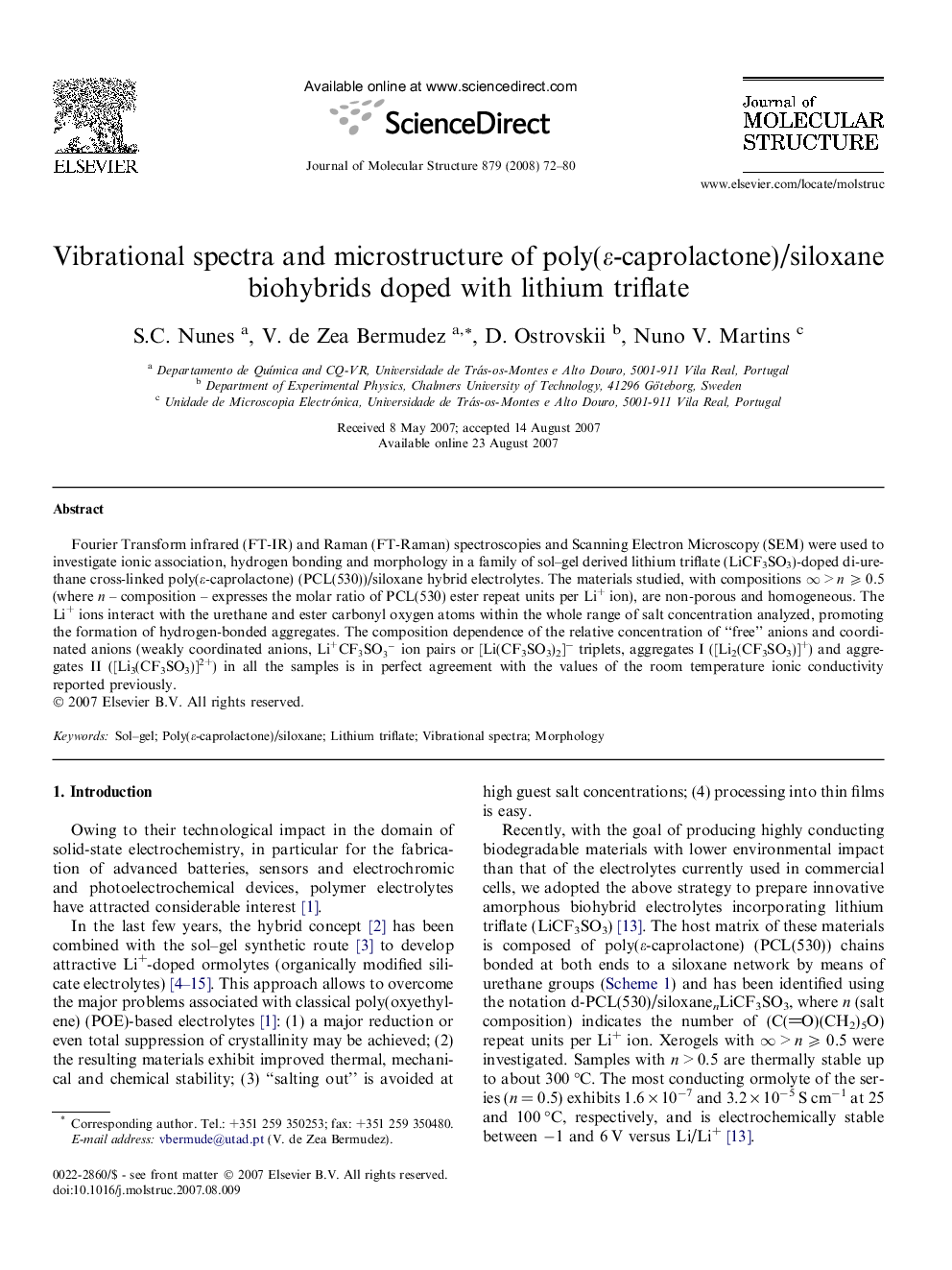| Article ID | Journal | Published Year | Pages | File Type |
|---|---|---|---|---|
| 1407382 | Journal of Molecular Structure | 2008 | 9 Pages |
Fourier Transform infrared (FT-IR) and Raman (FT-Raman) spectroscopies and Scanning Electron Microscopy (SEM) were used to investigate ionic association, hydrogen bonding and morphology in a family of sol–gel derived lithium triflate (LiCF3SO3)-doped di-urethane cross-linked poly(ε-caprolactone) (PCL(530))/siloxane hybrid electrolytes. The materials studied, with compositions ∞ > n ⩾ 0.5 (where n – composition – expresses the molar ratio of PCL(530) ester repeat units per Li+ ion), are non-porous and homogeneous. The Li+ ions interact with the urethane and ester carbonyl oxygen atoms within the whole range of salt concentration analyzed, promoting the formation of hydrogen-bonded aggregates. The composition dependence of the relative concentration of “free” anions and coordinated anions (weakly coordinated anions, Li+CF3SO3- ion pairs or [Li(CF3SO3)2]− triplets, aggregates I ([Li2(CF3SO3)]+) and aggregates II ([Li3(CF3SO3)]2+) in all the samples is in perfect agreement with the values of the room temperature ionic conductivity reported previously.
